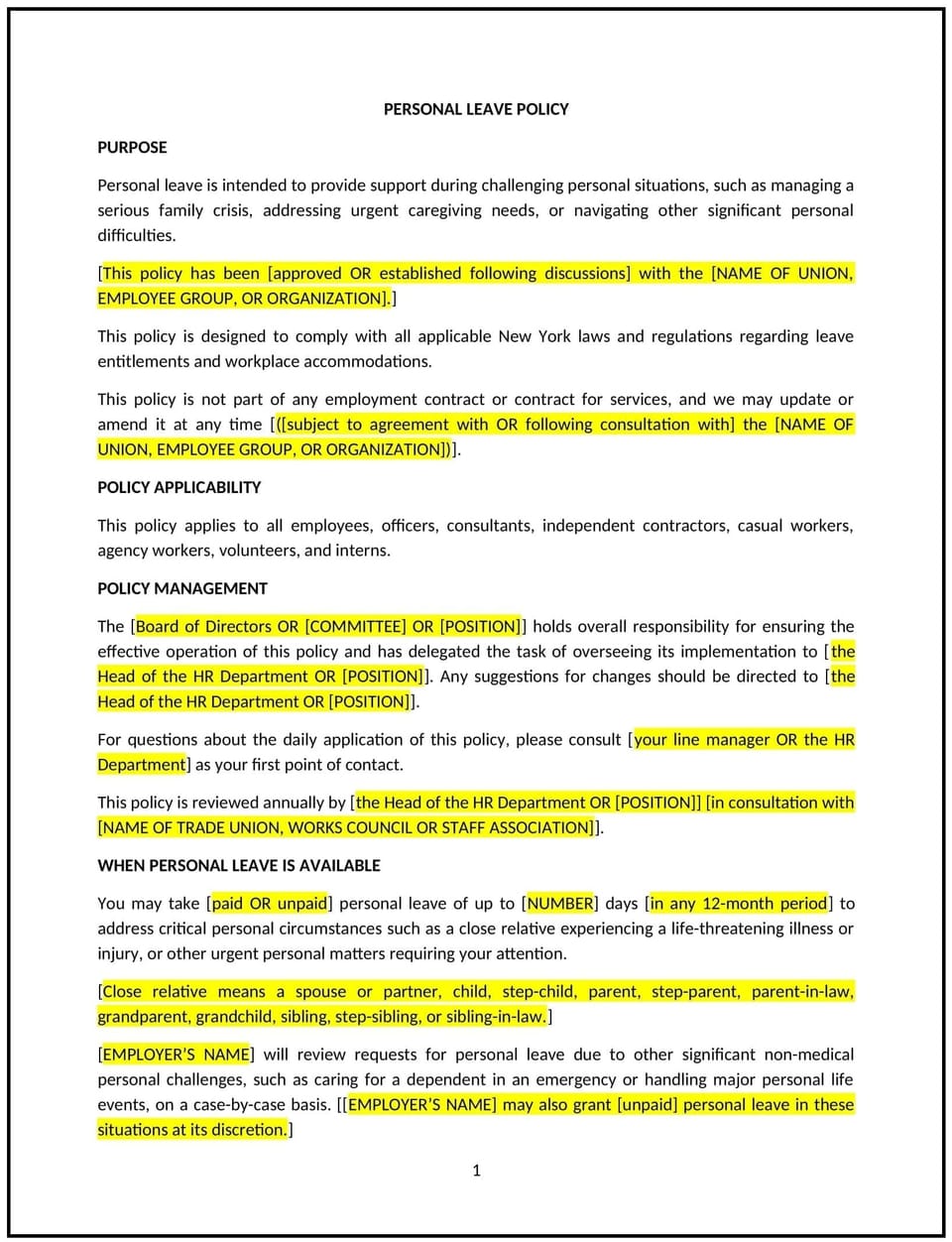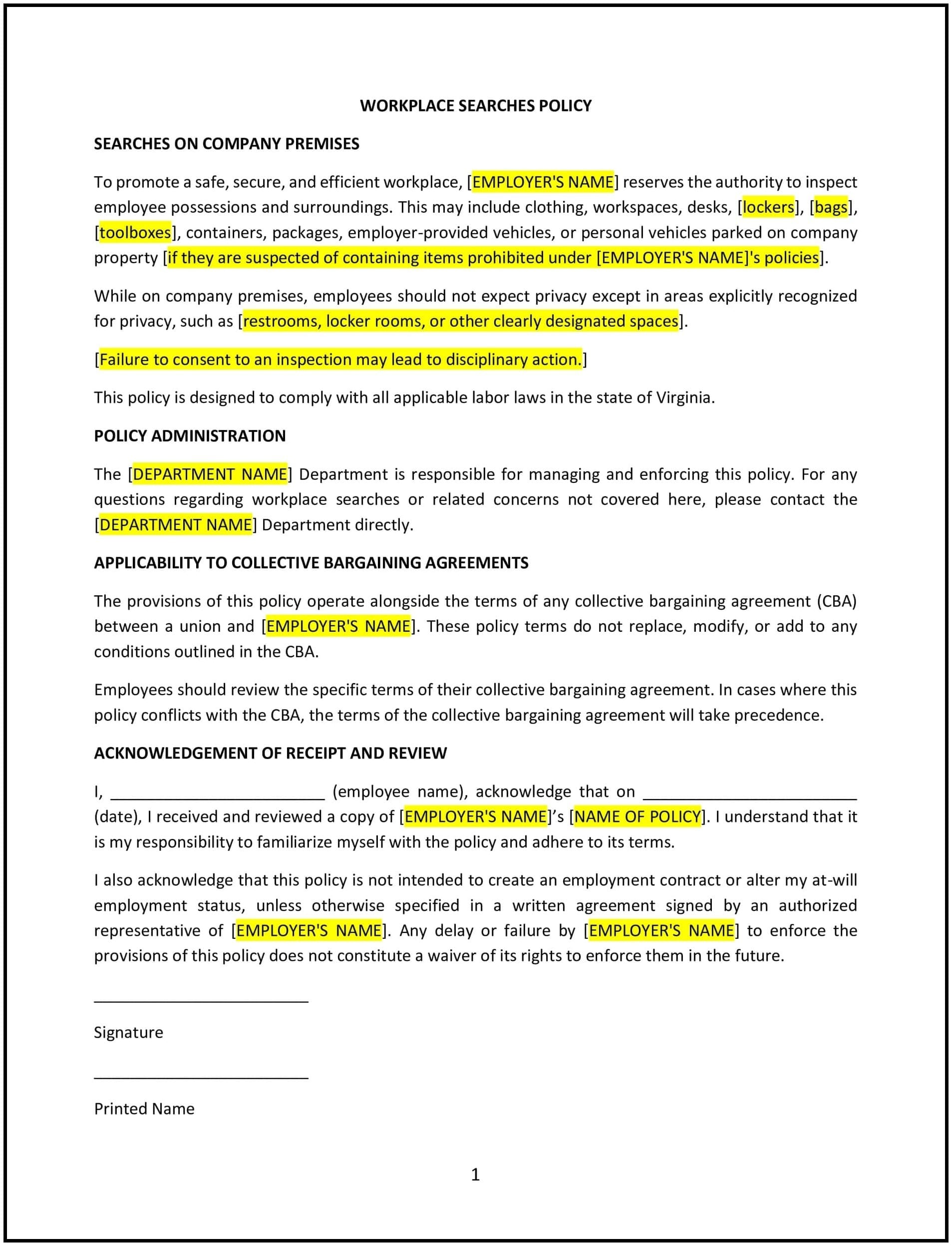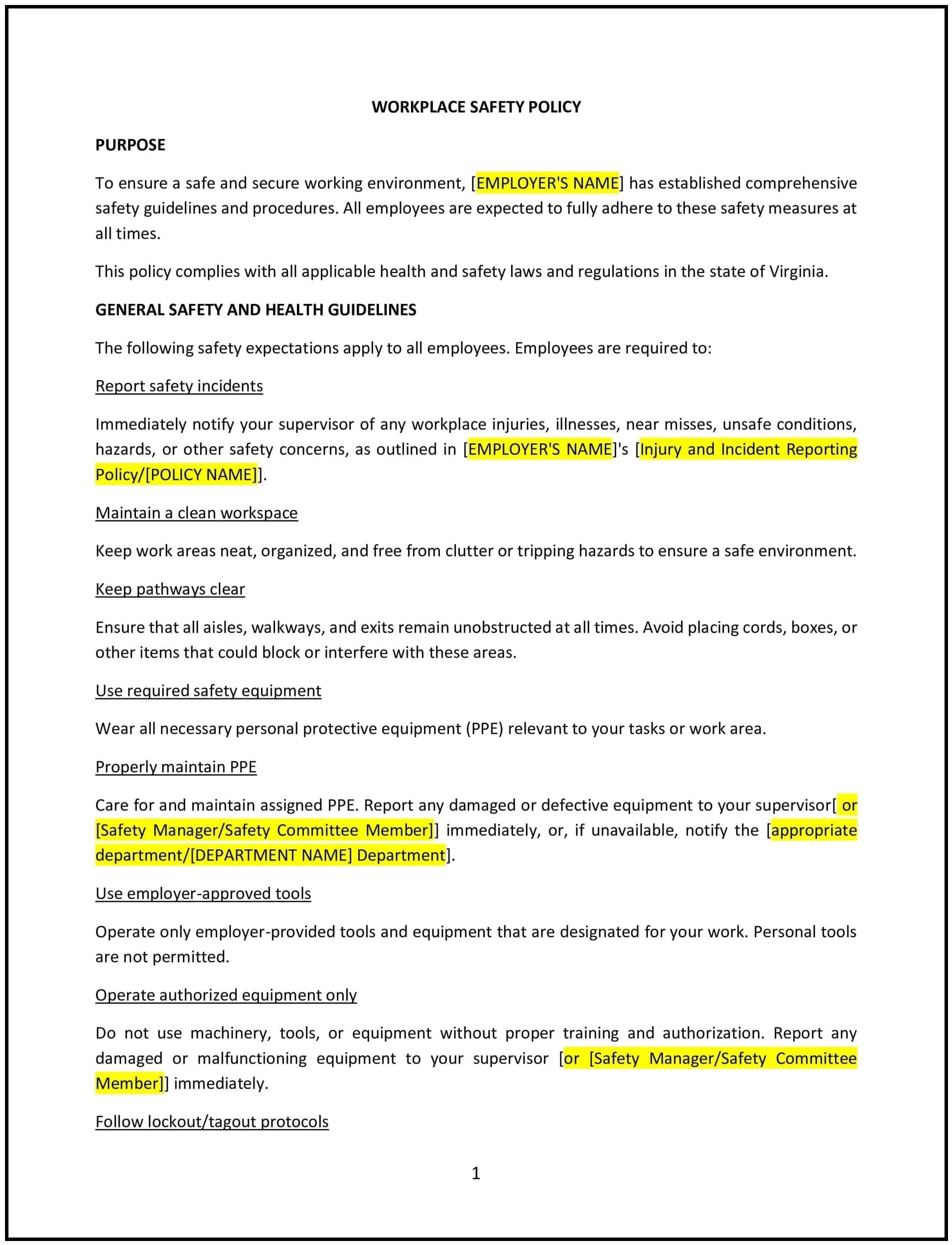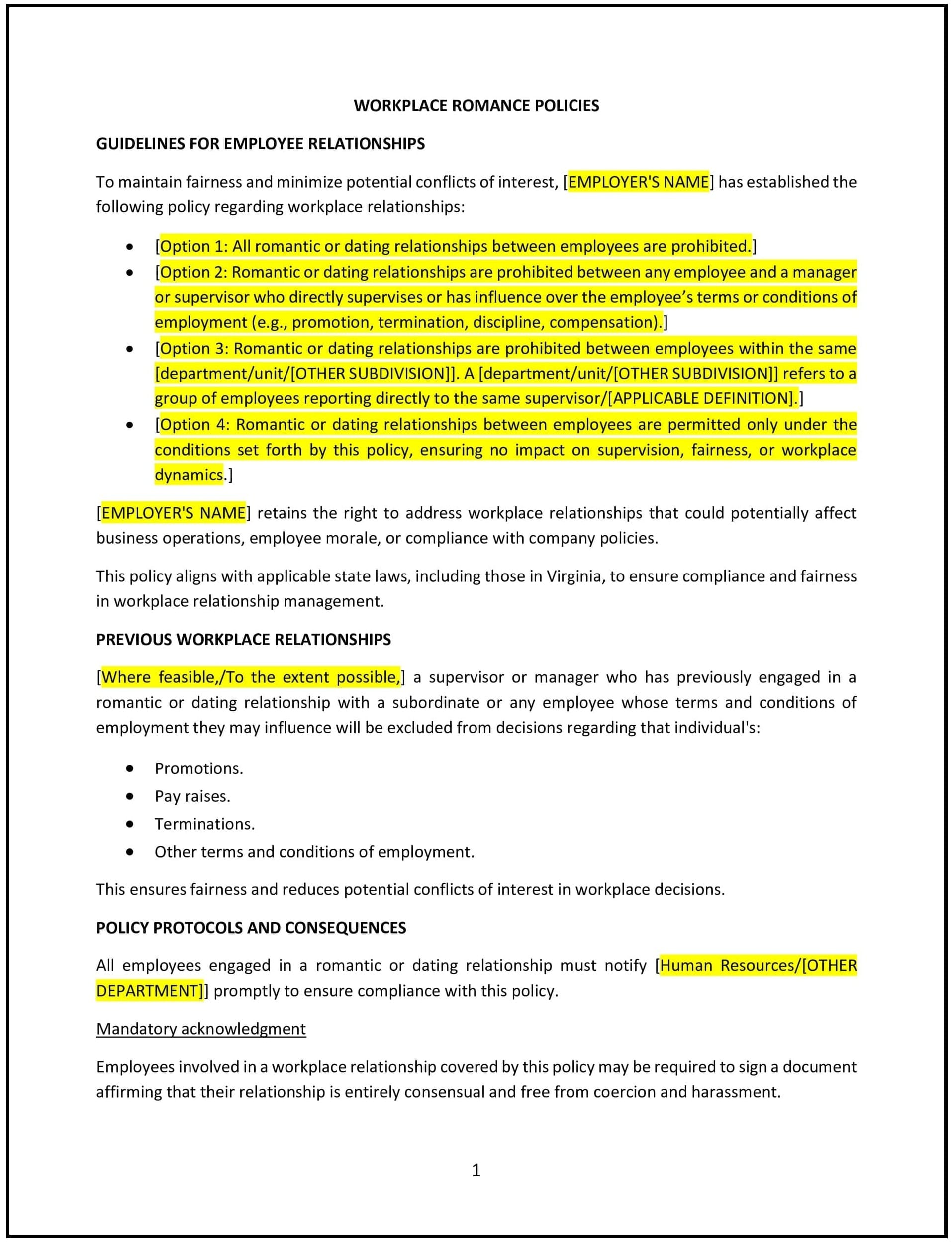Personal leave policy (New York): Free template

Personal leave policy (New York)
This personal leave policy is designed to help New York businesses establish clear guidelines for employees who need to take time off for personal reasons. Whether businesses are addressing medical needs, family emergencies, or other personal circumstances, this template provides a structured approach to managing personal leave requests while ensuring fairness and operational efficiency.
By adopting this template, businesses can support employee well-being, reduce absenteeism, and foster a more flexible work environment.
How to use this personal leave policy (New York)
- Define eligibility: Clearly state which employees are eligible for personal leave, considering factors such as length of employment, job performance, and full-time or part-time status.
- Specify the leave duration: Outline the maximum amount of personal leave employees are entitled to and whether leave is paid or unpaid.
- Provide notice requirements: Detail the procedures employees must follow to request personal leave, including how far in advance they should notify the business and any required documentation.
- Address job protection: Explain how employees’ jobs will be protected during personal leave and whether they are entitled to return to the same position or a comparable one upon their return.
- Include leave tracking: Specify how personal leave will be tracked, including how employees can access their leave balance and how usage is recorded.
Benefits of using a personal leave policy (New York)
This policy offers several benefits for New York businesses:
- Supports employee well-being: Clear guidelines help employees balance personal needs with work responsibilities, leading to greater job satisfaction.
- Enhances workplace flexibility: Providing personal leave options fosters a more adaptable work environment that can respond to employees' personal circumstances.
- Promotes fairness: A transparent policy ensures all employees have equal access to personal leave based on consistent criteria.
- Reduces absenteeism: By providing a structured process for personal leave, employees are less likely to take unplanned time off, reducing disruptions to business operations.
- Strengthens employee retention: Businesses that offer personal leave show a commitment to work-life balance, which can improve employee loyalty and reduce turnover.
Tips for using this personal leave policy (New York)
- Communicate clearly: Make the policy available in employee handbooks and explain it during onboarding to ensure employees understand how to request and use personal leave.
- Monitor usage: Track personal leave to ensure employees do not exceed their allowed time off, while maintaining flexibility for legitimate reasons.
- Offer flexibility: While the policy should set limits, allow some flexibility to accommodate emergencies or extenuating circumstances.
- Plan for coverage: Develop contingency plans for managing work during employee absences, ensuring minimal disruption to business operations.
- Review regularly: Update the policy as necessary to reflect changes in business operations, employee needs, or New York state regulations.
Q: Who is eligible for personal leave under this policy?
A: Eligibility is typically based on factors such as length of employment, job performance, and full-time or part-time status. Specific criteria should be outlined in the policy.
Q: How much personal leave can employees take?
A: The amount of personal leave allowed can vary, but the policy should clearly state the maximum duration for both paid and unpaid leave.
Q: Can employees take personal leave for any reason?
A: Personal leave is typically granted for a variety of personal reasons, such as medical issues, family emergencies, or other significant personal matters. The policy may specify acceptable reasons for leave.
Q: Is personal leave paid or unpaid?
A: The policy should specify whether personal leave is paid or unpaid, and how much paid leave employees are entitled to based on their role and tenure.
Q: How often should this policy be reviewed?
A: The policy should be reviewed annually or whenever there are significant changes in business practices, employee needs, or New York state labor laws.
This article contains general legal information and does not contain legal advice. Cobrief is not a law firm or a substitute for an attorney or law firm. The law is complex and changes often. For legal advice, please ask a lawyer.


